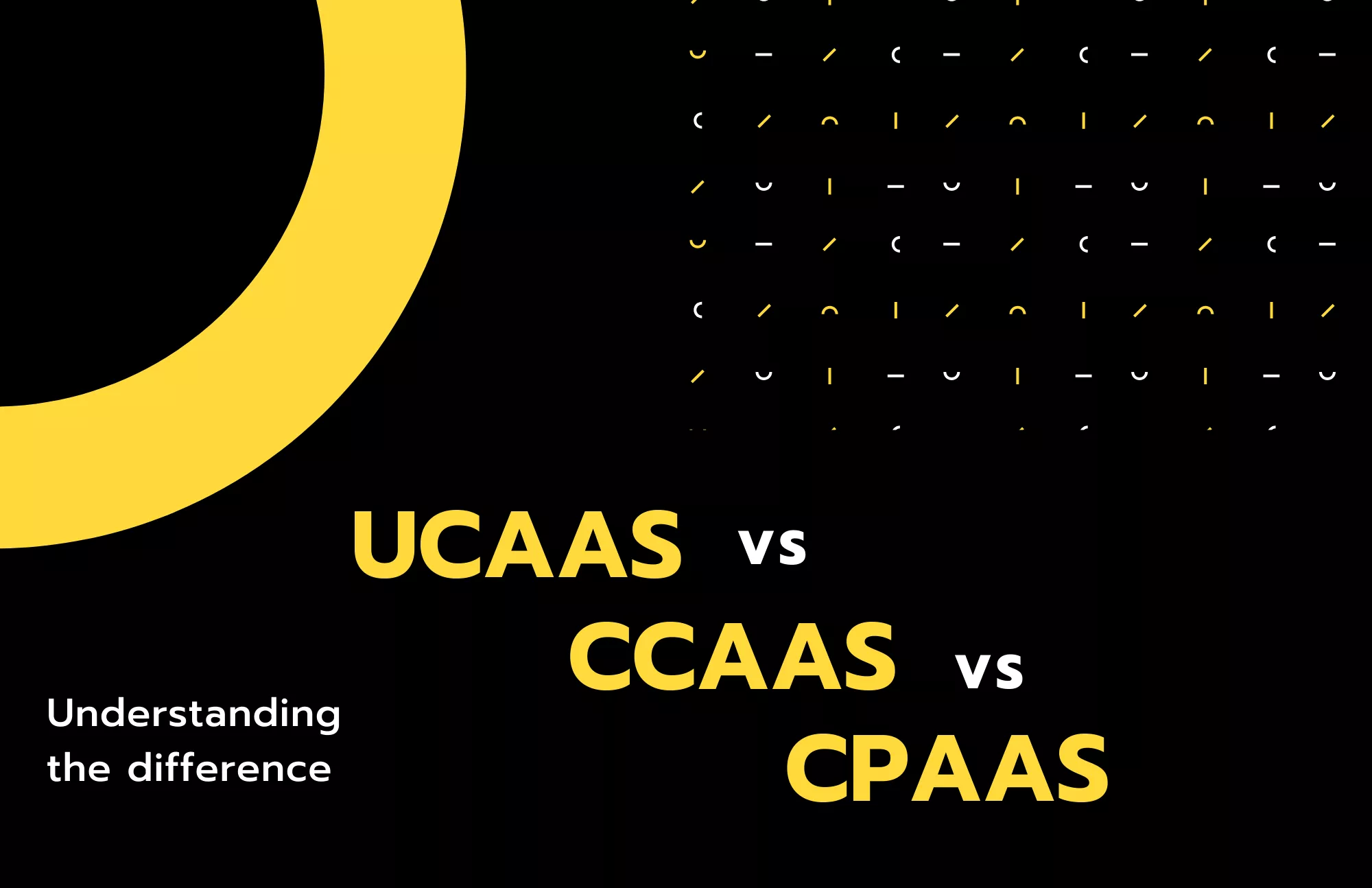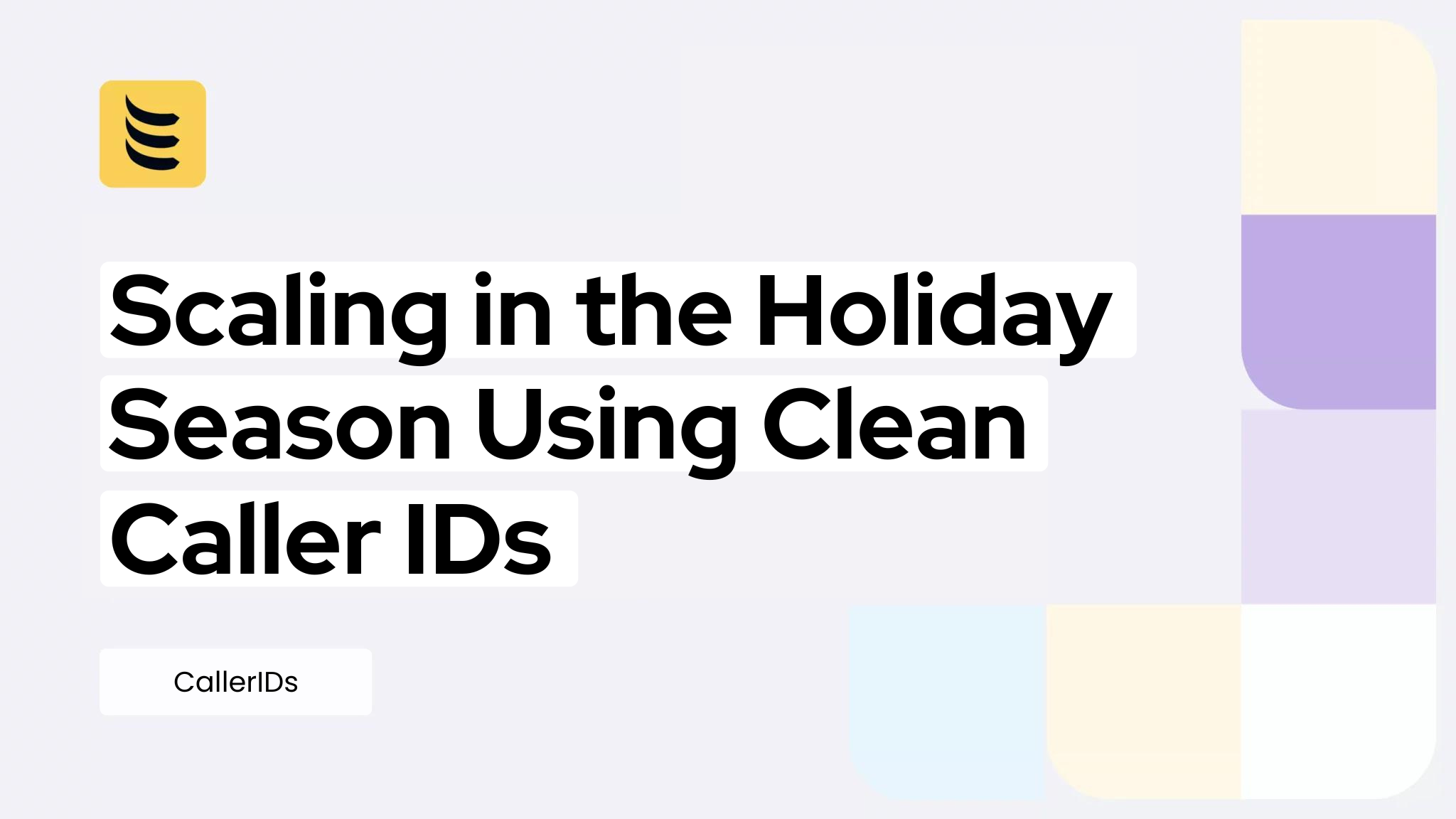What Is UCaaS? Who Should Be Using It?

What does UCaaS stand for? UCaaS, meaning Unified Communications as a Service, is a business communications model that delivers enterprise communication, collaboration, and data sharing functions as a subscription-based commodity from the cloud. Payment is typically on a monthly, quarterly, or annual basis, and the UCaaS service provider hosts the underlying infrastructure and takes responsibility for its maintenance and upgrades.
What is UCaaS in practical terms? For the subscriber, Unified Communications as a Service usually offers features such as:
- Voice over Internet Protocol (VoIP) telephony
- Conferencing facilities, including audio, video, and web platforms
- Voicemail
- Chat
- Instant Messaging (IM)
- Presence functionality to track the availability and status of individuals and teams
- Apps and connectivity giving access to the UCaaS platform for mobile devices
- Collaboration tools
- Some level of integration with existing business applications and platforms
UCaaS is aimed at businesses (including enterprises and individual entrepreneurs) looking for a comprehensive communications and collaboration solution that doesn’t require them to manage or maintain their own infrastructure.
IDC’s March 2021 report on the worldwide Unified Communications & Collaboration market reveals that in 2020, the sector as a whole grew 24.9%, to reach a valuation of $47.2 billion. There are many UCaaS providers on the market. Among the most trusted and well known are:
- 8×8
- Dialpad
- GoToConnect
- Mitel
- net2phone
- Nextiva
- RingCentral
- Vonage
- Zoom
UCaaS uses Voice over Internet Protocol (VoIP) as the basis for its voice telephony functions. This technology converts audio signals into digital data, which can then be transmitted over the internet or a data network. With a fast and stable connection, this provides benefits over traditional analog phones in terms of call quality, the range of available telephony features, and costs
In addition to this, UCaaS delivers enterprise-grade collaboration and business communications tools with file sharing, from a platform that’s available to users with internet access on any device, and from any location.
What Is CCaaS? Who Should Be Using It?

CCaaS stands for Contact Center as a Service and describes a communications framework that enables organizations to use a remotely hosted and cloud-based infrastructure for the running of their contact center operations.
Organizations can implement CCaaS in a number of ways, depending on their available resources and requirements. In many cases, the organization may use a cloud-based customer experience (CX) solution, but in other instances, on-premises software installations for CCaaS are employed. Hybrid deployments are also possible, with the organization using subscription-based and cloud-delivered Software as a Service (SaaS) for their contact center functionality, and either renting infrastructure from a service provider or using their own hardware.
In all instances, the focus of CCaaS is on providing organizations with the capacity and tools to handle queries, customer interactions, and customer service/support cases. In the digital economy, these cases can come through via several avenues, including phone calls, text messages, chat, social media, Instant Messaging, email, and online forms. Comprehensive CCaaS solutions will include tools and functionality for all of these channels.
Among the leading CCaaS providers in the current market are:
- 8×8
- Avaya
- Cisco
- Five9
- Genesys
- net2phone
- Nice inContact
- RingCentral
- Verint Systems
- Zendes
What does CCaaS stand for in larger economic terms? As of this year, experts are predicting that CCaaS market offerings will grow to $27.8 billion in 2023. Much of this growth is due to the increasing dependence on digital communication channels brought on by the pandemic. Cloud-based CCaaS solutions enable contact center staff to access their organization’s contact center software from any web browser or mobile device, at any time, and from any location.
You’ll notice that we’ve been using the term “organization” a lot in this discussion of Contact Center as a Service. That’s because CCaaS users are primarily business enterprises or other institutions that routinely deal with customers, members, or users – and whose staff must also field queries and conduct interactions with customers through various channels of communication.
CCaaS facilitates customer service through features such as automatic call distribution and Interactive Voice Response (IVR). With its contact center infrastructure in the cloud, CCaaS also provides savings in costs and IT staffing. Data analysis and reporting tools are usually available to enable administrators to monitor staff performance and initiate improvements.
What Is CPAAS? Who Should Be Using It?

What is CPaaS, and what does CPaaS stand for? CPaaS, meaning Communications Platform as a Service, is a cloud-based software development infrastructure model which provides a programmable platform that enables developers to create, run, and distribute communications software.
A CPaaS solution will typically provide integrated software development environments and Application Programming Interfaces (APIs) to facilitate the incorporation of communications functionality into business applications, processes, and services. This communications functionality may take various forms, such as messaging, voice, or video. It may also include security interaction features like multi-factor authentication, where users logging into a service must provide both a password and a one-time token like a code sent via email or text.
CPaaS is therefore tailored for use by independent communications software developers, and organizations with in-house development talent who are looking to integrate communications features into their existing applications or online presence. For example, a business might use CPaaS to develop an interactive chat box for its eCommerce portal or website. All of this can be accomplished without the overhead of maintaining a development environment and its associated infrastructure.
High-end CPaaS solutions will provide program code, standard APIs, and Software Development Kits (SDKs), typically for a monthly subscription fee. CPaaS software providers also offer technical support for their applications. Leading CPaaS providers include:
- Brightlink
- Twilio
- Bandwidth
- Telnyx
- Pliv
Key Differences Between UCaaS, CCaaS, and CPaaS
Unified Communications as a Service consolidates communication services into a single platform, making it difficult and cost-intensive to integrate UCaaS directly into an application. By contrast, Communications Platform as a Service (CPaaS) uses APIs and other resources to facilitate the building of software features and allow their easy integration into existing apps. For this reason, CPaaS is the avenue of choice for organizations that require specific communication features but don’t want to go to the extent of using an external service to gain access to them in real-time.
While UCaaS telecom and Contact Center as a Service (CCaaS) share areas in common when it comes to communications tools and features, the focus of CCaaS is primarily on interacting with the consumers or customers of what an organization has to offer, rather than enabling collaboration and information sharing internally.
What Is BYOC?

BYOC stands for Bring Your Own Carrier. It’s a deployment and business model which, through special integration via APIs and/or SIP, enables you to select a communications carrier most suited to your business needs, and use that carrier directly in your Unified Communications (UCaaS), Communications Platform as a Service (CPaaS) or Contact Center as a Service solution (CCaaS).
In a typical scenario, an organization with a subscription to a cloud or hosted voice platform may not be fully satisfied with the telephony options, quality, support, or termination rates that the platform provider has to offer. With BYOC, the organization can agree directly with an external communications carrier of its choice on billing and the management of its voice services.
Making The Most of UCaaS, CCaaS, CPaas with BYOC
In the past 31 years, IDT’s Voice expertise has helped organizations get superior voice quality, white-glove concierge support, scalable voice infrastructure, competitive cost, and extensive coverage.
As it stands, the world is inclining towards a hybrid model of communication and collaboration, thus it is crucial to be agile to adapt to these ever-evolving developments. Integrating IDT with your Voice UCaaS, CCaaS, or CPaaS platform augments its present capabilities while adding reliability, agility, security, and control to your overall telephony.
IDT BYOC seamlessly integrates with leading UCaaS & CCaaS platforms like Twilio, MS Teams, Plivo, and Genesys. In just 4 simple steps you can start testing IDT via any communication platform and be assured of its superior Voice quality, concierge support & affordable pricing.
If you’d like to know more about how IDT’s BYOC can help you make the most of your UCaaS, CCaaS, or CPaaS deployment, get in touch with us.




